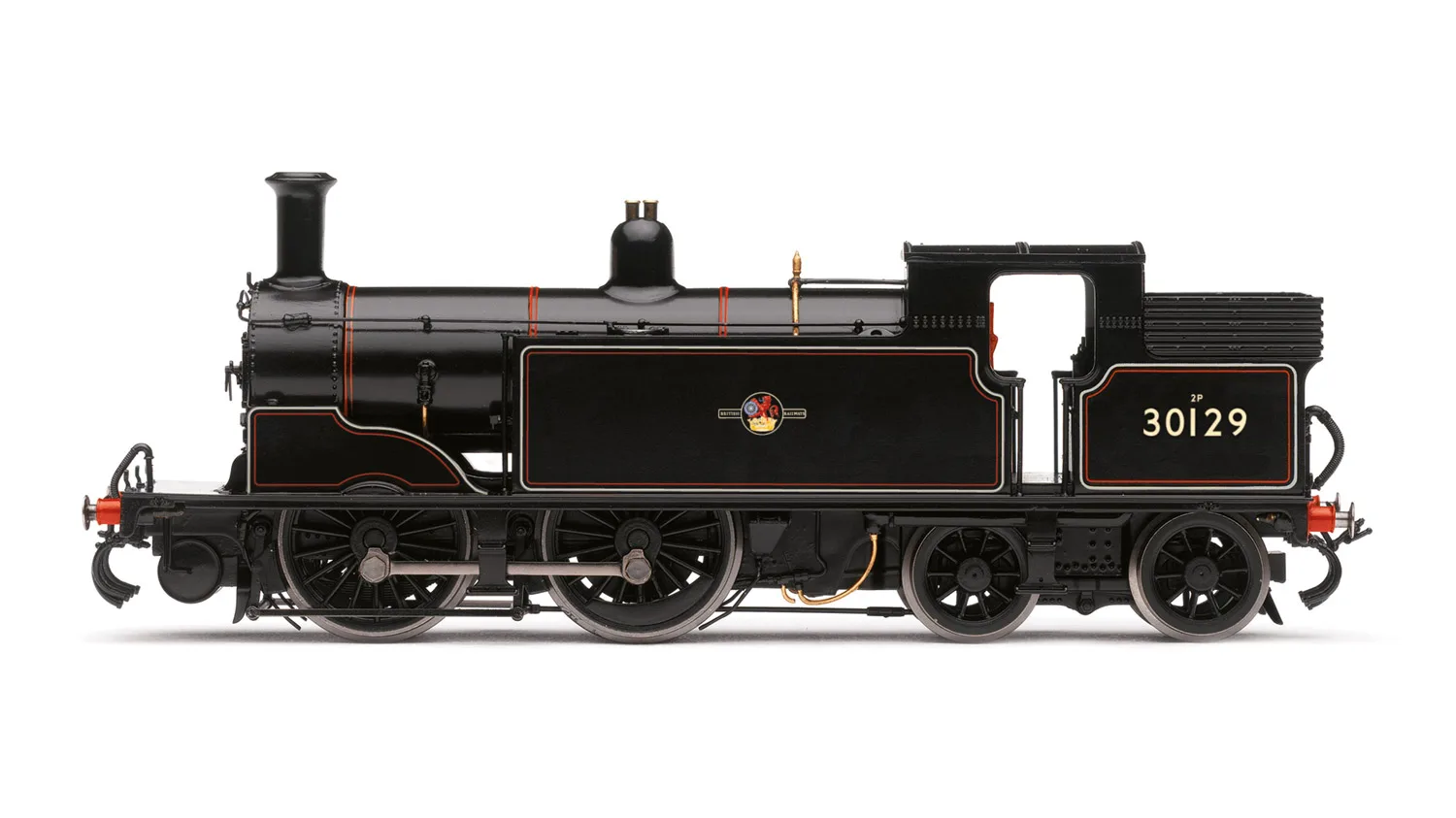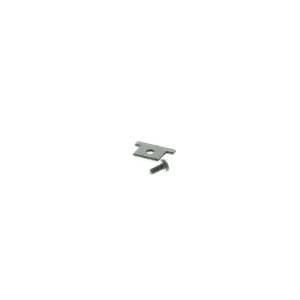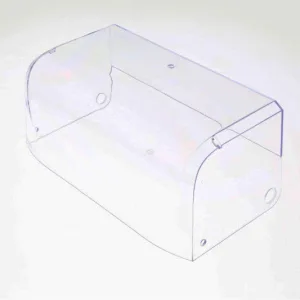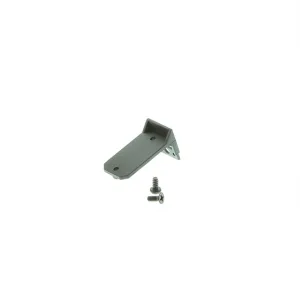BR, M7 Class, 0-4-4T, 30129 – Era 5
When Dugald Drummond succeeded William Adams as Locomotive Superintendent of the London and South Western Railway in 1895, his first, all new class was the M7 0-4-4T. Derived from previous 0-4-4T designs of his at the North British and Caledonian Railways, construction commenced in 1897 and continued in batches until 1911 with 105 being built eventually.
Ideally suited to the demands of suburban workings with frequent station stops, the M7 possessed quick acceleration and good tractive power and was equally at home on Branch line workings, or acting as station pilots. Unfortunately, following a major derailment at Tavistock in 1898, the class were withdrawn from fast passenger services, the 0-4-4 arrangement proving inherently unstable at continuous high speeds.
In 1912 the L&SWR introduced cable and pulley equipped push-pull services on some branch lines, but the Southern Railway subsequently adopted the compressed air control system and thirty six of the class were converted to this between 1930 and 1937, with a further four appearing between 1960 and 1962, these conversions being confined to the long framed variants of the class. All but two of the class survived into British Railways days, the last members of the class not being withdrawn until May 1964 and two still exist in preservation. Locomotive 30129 was built at Eastleigh and entered traffic as LSWR No.129 in November 1911.
During its lifetime, the locomotive worked across the Southern region, from Yeovil to Faversham Sheds and was finally withdrawn from service in November 1963, whilst allocated to Bournemouth Shed.
Maximum curve Hornby 2nd radius + / 438mm+.





